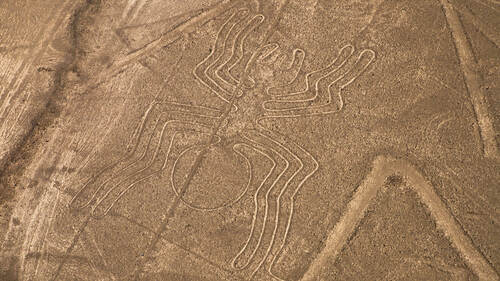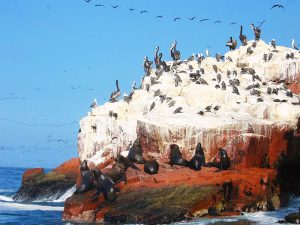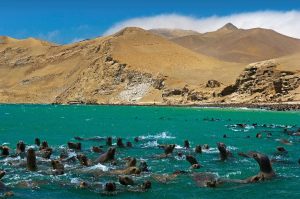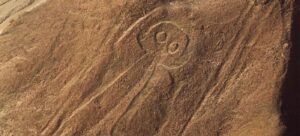One of the most famous Nazca geoglyph creations, the Nazca Lines Spider is one of the most exciting and sought-after designs which travelers are itching to see when visiting this iconic area of Peru.
The Spider in particular is one of the more elaborate creations which required finer skills to complete. This can best be seen when flying from above, where we can see the scale of this particular geoglyph whilst learning about the importance of Spiders for ancient Peruvian cultures like the Nazca.
In this guide we’ll explore everything you need to know about the Nazca Lines Spider, including how big it is and what it symbolizes. We’ll also explore how you can best see this iconic design later in this article.
Table of Contents
Everything You Need To Know About The Nazca Lines Spider
What Does The Nazca Spider Symbolise?
With so many different animal and insect hieroglyphs found in the Nazca Desert, it’s normal to wonder why they were all created here in the first place. For the Nazca civilisation, these different species all represented powerful symbols and deities and were regularly worshiped by the local people.
The Nazca Spider in particular is a popular one to be curious about, and many theories suggest that this figure depicts rains and abundance of water. Given they were living in a hostile desert where droughts were common, this suggests that the Nazca Spider design in particular was very important for them.
How Big Is The Nazca Spider?
Heading back to the most famous spider hieroglyph in Peru, the Nazca Spider measures roughly 150ft in length. Within the Nazca Lines we’ll find bigger designs, however this particular one really stands out given how narrow the legs are. This really helps this Nazca Lines hieroglyph to really pop out, and give a more 3D appearance when seen from above.
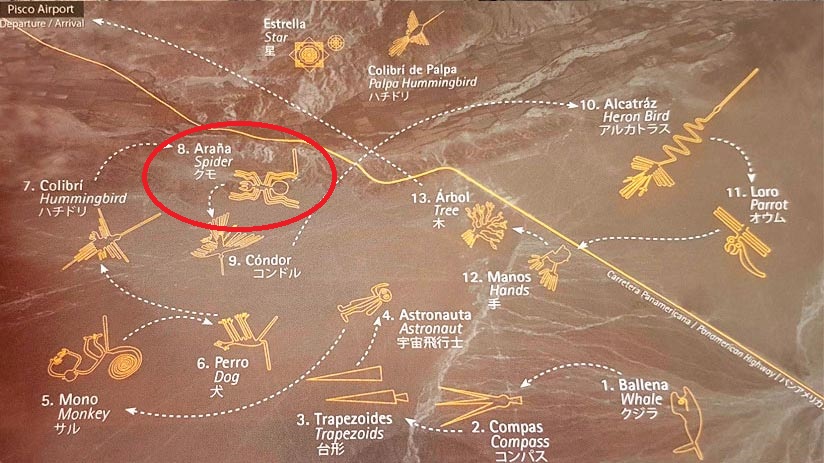
The Importance Of Spiders Throughout Peru’s Ancient History
Spiders are quite a common find all around Peru, with many distinct species hailing from the humid Amazon Jungle as well as within the remote Andean Mountains. In fact it’s still unknown just how many species there are, given they avoid human contact and can live in very difficult-to-find areas.
Whilst the Nazca Lines Spider highlights the importance of arachnids to this particular coastal culture, they are also held in high regard elsewhere in Peru. For example in the La Libertad region (where Trujillo is located), they recently discovered a 3000+ year old temple that worships spiders. It’s also suggested that other ancient civilisations also had their own Spider deities, such as that of the Wari Culture.
How To Best See The Nazca Spider
There are two main options for seeing the Nazca Spider and the other famous hieroglyphs that are found in this arid region.
The very best way is flying overhead with an aerial tour, which gives unrivaled 360° views from above. As well as riding in a small aircraft with stellar views, you’ll also have a professional pilot maneuver the plane in order to have the very best views possible.
An alternative way of spotting the Nazca Spider is by heading up the observation tower which is located in the middle of the desert. Whilst cheaper, the drawbacks include the limited views (you’ll get a 45° angle at best as you won’t be so high up), and also the fact that there is only one tower to ascend which means you’ll only have one view.
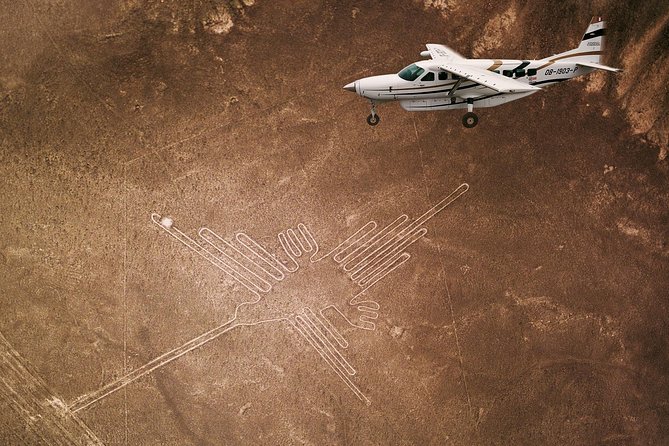
Overview Of The Nazca Spider
And that’s all for this guide on the Nazca Spider, as well as the importance of this historical ancient creation.
One of the more famous hieroglyphs we can see when soaring above the Nazca Desert, the Spider was thought to have represented rains to the local cultures – and as such was a very important deity for them. This design in particular also really pops out when seen from above given its elaborate design.
Are you looking to explore the ancient Nazca Lines? Here at TravelBuddiesPeru we operate a memorable Nazca Lines day trip from Lima, where you’ll fly over these incredible hieroglyphs and see them with unparalleled views from above. As a bonus, you’ll also get to visit the desert oasis of Huacachina as well as the Ballestas Islands along the way.

